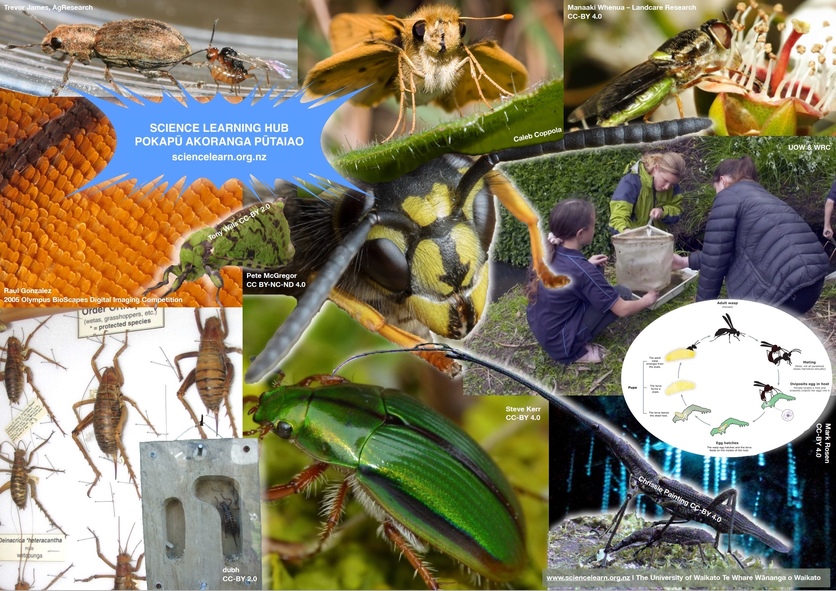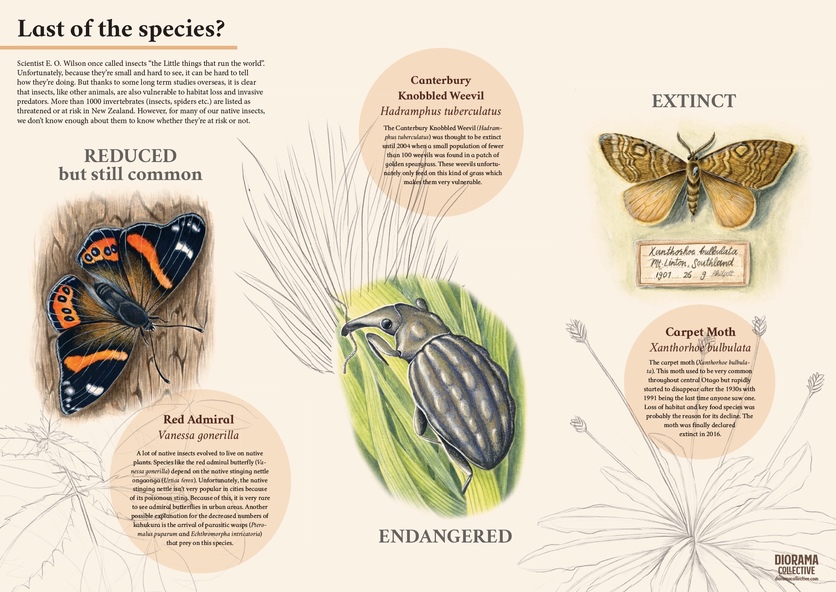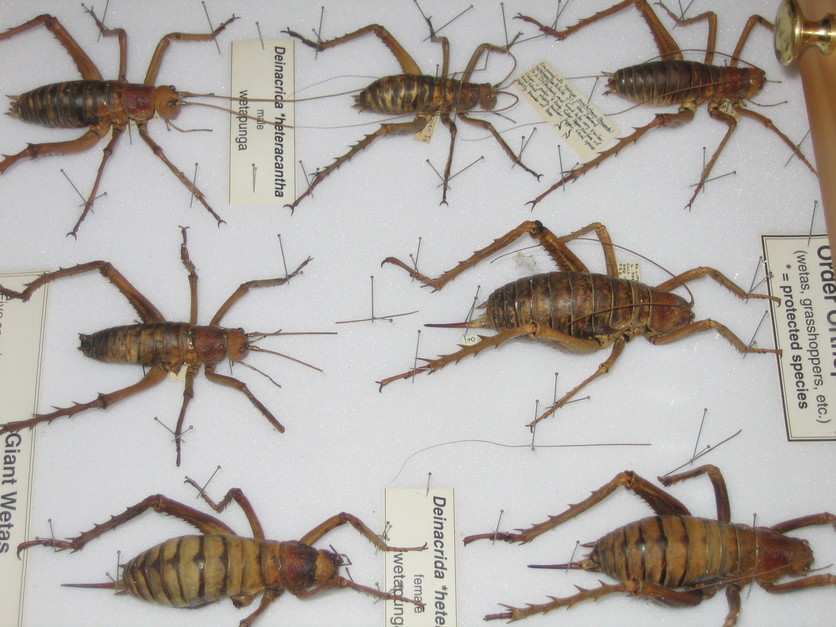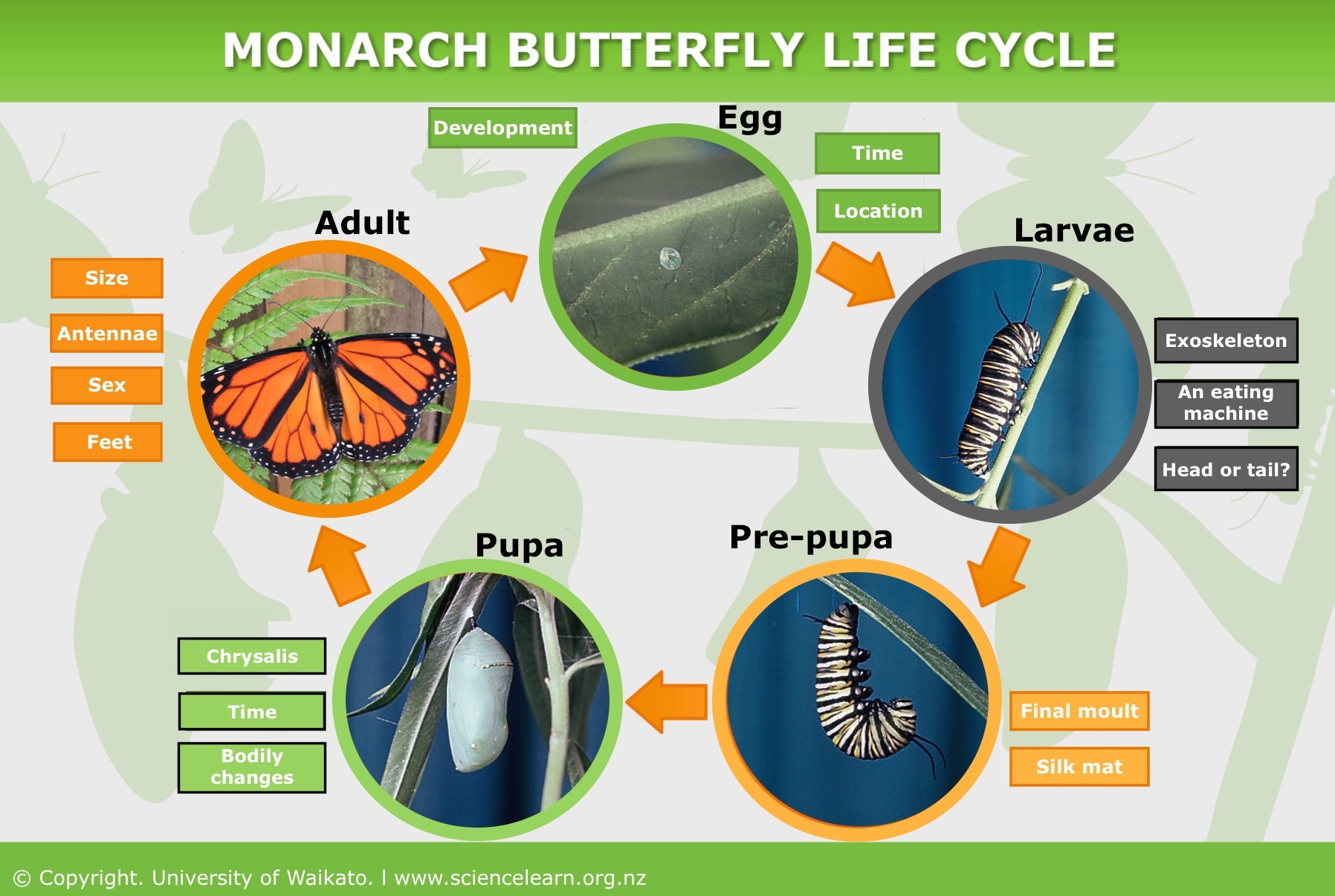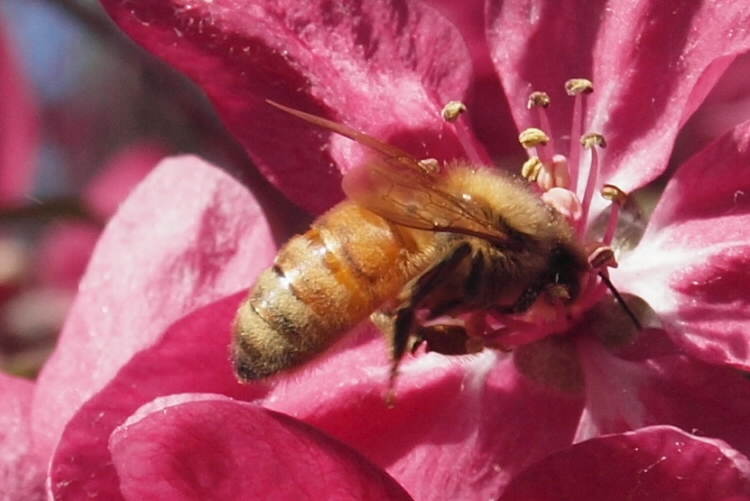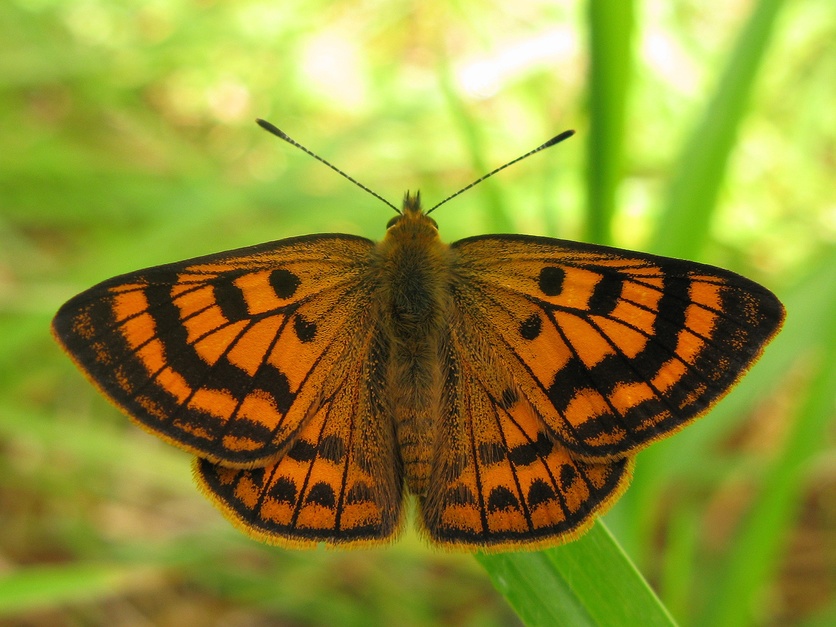Investigate insects found in New Zealand to answer questions about life cycles, classification, conservation and biosecurity. Start by watching our webinar All about insects.
Below are links to a wide range of Science Learning Hub resources primarily aimed at primary teachers and related to insects in the Living World strand of the New Zealand Curriculum.
The Super Insects article has all of Countdown’s Super Insect teacher resources available as free downloadables – including an overview poster, 10 activity cards and a cross-curricular activity bonus.
- Native insects
- Life cycles
- Honey bees
- Butterflies
- Innovative ideas
- Biosecurity and biocontrol
- Monitoring
- More on insects
- Useful links
Native insects
The islands that make up this country are home to a vast number of species found nowhere else in the world. Learn about some of our native insects. Explore this further in our article What’s so special about insects?
- Insect taxonomy – article
- Te aitanga pepeke – article
- Aquatic insect life – article
- Insects – physical characteristics – article
- Label the insect – activity
- Label the wētā – interactive
- Label the cicada – interactive
- The five most diverse insect orders – interactive
- New Zealand aquatic insects – interactive
- New Zealand's unique ecosystems – introductory article with links to media, articles and activities.
- Glow-worms – article
- Cave wētā – article
- Wētā – article
- Building homes for tree wētā – activity
- Redesigning wētā houses – article
- Vegetable caterpillar – article
- Fred the thread – article
- Science and literacy – using Fred the Thread – activity
- Mummified caterpillar ❘ Te anuhe whakapokongia – video
- Discovering new species – collection of resources based on Fred the Thread
- Our elusive native butterflies – article
- Middle Earth wasps – article
- Insect antennae – article
- Honeydew ecosystem (scale insects) – article
- Insects and forest ecosystems – article
- Honeydew: The Food of the Ngahere – video
- Constructing food webs (scale insects) – activity
- Insect mihi – activity
- Moth collecting – activity
- Identifying bugs – activity
- Rearing insects – activity
- Make a wanted poster – activity
- City of bugs – Connected article
Life cycles
Insect life cycles have many similarities and differences, making them an ideal way to learn about life processes.
- New Zealand native butterflies – article
- Monarch butterflies – article
- White butterfly life cycle – activity
- Monarch butterfly life cycle – interactive
- Rearing moths to observe life cycles – activity
- Insect metamorphosis – image
- Glow-worm life cycle – image
- Vegetable caterpillar fungi – video
- Parasitoid wasp life cycle – article
Bees
Honey bee are the most important pollinators of many cultivated food crops and other flowering plants. See our bees topic for more.
- Pollination – introductory article with links to media, articles and activities
- Pollination role-plays – activity
- Honey to heal – introductory article with links to media, articles and activities
- The Buzz of bees – article
- Bees – fun facts – article
- Bee-friendly insecticides – article
- Honey bee heroes – article
- Honeybees and Mānuka trees – article
People are doing heaps for kauri, kiwi and kākāpō but nothing for endemic butterfly species, yet insects are crucial to the ecosystem.
Jacqui Knight
Butterflies and moths
Almost all of the butterflies in New Zealand are native and most are endemic. Compared to big, colourful species from other countries, our native butterflies are small and secretive. See our butterflies and moths topic for more.
- Investigating butterflies – introductory article with links to media, articles and activities
- Butterfly defense mechanisms – article
- New Zealand butterfly origins – article
- White butterflies – article
- Establishing butterfly transects – activity
- Tagging monarch butterflies for science – activity
- Butterflies (lower primary) – unit plan
- Butterflies (upper primary) – unit plan
- Helping the butterflies of Aotearoa New Zealand – article
- Ahi Pepe MothNet project – introductory article with links to media, articles and activities
- New Zealand moths – article
- Difference between butterflies and moths – article
- Making moth identification guides – article
- Our collection Kaitiakitanga and moths includes information and ideas about the pepe and pūrerehua of Aotearoa as well how children are learning about how to protect these amazing, secretive creatures.
Innovative ideas
Insects are used by science to inspire and solve a number of problems.
Where we’re controlling insects without the side effects that other control tactics seem to have is a very satisfying thing personally because it’s helping to green New Zealand even further.
Dr Max Suckling
- Dung beetle mania – article
- Dung beetles released on farms – article
Biosecurity and biocontrol
Insects are both an issue and a solution when it comes to protecting New Zealand's natural and primary production environments. For more, browse the range of resources under the biosecurity and biocontrol topics.
Introduced pests:
- White butterflies – article
- German and common wasps – article
- Whangarei fruit fly find a worry – article
- Eradicating southern saltmarsh mosquitoes – article
- Fighting a little bee mite – article
- Improving Aotearoa New Zealand’s biosecurity detection – article (with a focus on the fall armyworm pest)
Biocontrol success stories:
- Bioforce – breeding bugs for biocontrol – article
- Irish wasp to the rescue – article
- Weevils eat pesky buddleia weeds – article
Monitoring
Find out what insects are in your local environment with these activities:
- Pollinator counts – insects and flowers
- Yellow pan traps – monitoring flying insects
- Pitfall traps – monitoring ground-dwelling insects
- Heath moth traps for monitoring moths
- Establishing butterfly transects
- Tagging monarch butterflies for science
Citizen science projects
- Participate in the New Zealand Mosquito Census and help scientists at Te Papa learn more about the various mosquitos in Aotearoa.
- Global Earth Challenge is an international citizen science project that has a section on monitoring insect population changes.
More on insects
- Hi tech drones copy nature’s design – article
- New Zealand’s fish-eating spider – article
- Poison comes in small packages – article
- Tree lobsters’ convergent evolution – article
- Deformed bee wing virus – image
- Gum leaf skeletoniser – image
- Wasp versus ant – image
Useful links
Visit our Wasps and We love bugs! Pinterest boards for links to more resources and community activities.
The Entomological Society of New Zealand was formed to provide a common meeting ground for everyone interested in entomology in New Zealand. It aims to stimulate interest, encourage amateurs and promote the profession of entomology. They run the annual Bug of the Year contest.
